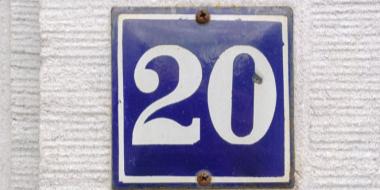How To List Education on Your CV: A Guide
Your education is an essential part of your CV. It can have an impact on your chances of success, show that you’re qualified for certain positions, and set you apart from other candidates. In this article, we reveal how to list your educational achievements on your CV for maximum impact. The article discusses the placement of your education section, what qualifications to include and extra details that can make all the difference.

Should you include your education on your CV?
You should always include your education on your CV. It’s one of the most important sections, as employers often list educational requirements in job adverts. Listing your education can quickly confirm to the reader that you’re eligible for the role. It’s important to list your highest or most recently completed qualification. However, if you’re studying towards a qualification and you’ve not yet completed it, you can still include this in your CV.
What do employers want to see in your education section?
What employers want to see in your education may differ slightly depending on the role and its level of seniority. All CVs should include an education section listing your highest qualification. This could be a degree, A-levels, NVQs, BTECs, GCSEs or other recognised certificates and qualifications. You may also want to include some details about what you studied, awards you won or any areas of specialism.
Job adverts often state the level of education required for a role, so listing your education is a way of confirming your eligibility for the role. Your education section can also indicate to employers your level of expertise and knowledge of a subject, especially if your qualification is directly linked to the role you’re applying for.
Expert tip:
Information about education on your CV
There’s some information that's essential to include in your CV’s education section. Most CVs follow a standard format for listing academic achievements and qualifications. Make sure you include all the necessary information. There are also some optional sections you can include if you have the space, or if you want to make your education section more prominent. This can be useful, for example, if you lack work experience and want to emphasise your qualifications.
Typically, it’s only necessary to include your highest qualification in your CV. However, if you have many qualifications that are relevant to the role, you may wish to include more than one of them. For each entry, list the qualification name and level (for example, BA English), followed by the name of the institution you studied at, its location and your dates of study or graduation. If the name of the institution makes its location obvious (for example, The University of Sheffield), you don’t need to state its location.
You may also want to specify the grade you received. This is especially relevant if the job requires a certain level of qualification or degree (for example, a 2:1). If you didn’t get good grades in your qualifications, and the job description doesn’t specify a required level, it’s best to leave this out.
Additionally, you can add some further information about your studies. These could be classes you took, societies you participated in, specialist areas of study or dissertation topics. This information can be particularly useful if you’re applying for entry-level roles.
How to list completed education
The examples below show how to structure your education section for complete qualifications:
Short degree example:
BSc (Hons) Civil Engineering (2:1), University of Bristol, September 2014 – July 2017
Long degree example:
BSc Information Management for Business, Royal Holloway, University of London, Egham, September 2019 – June 2022
- Specialised in complex financial IT systems
- Dissertation on ‘the impact of big data analytics on business performance’
- Member of university coding society
Professional qualification example:
Chartered Accountant (ACCA Diploma in Accounting & Business), London School of Business & Finance, April 2021 – May 2022
How to list in-progress education
If you’re still studying, and wish to include your in-progress qualifications, follow the format in the example below:
BA (Hons) Sociology, University of Portsmouth (in progress)
- Modules include social theory, criminology, media in contemporary culture, the sociology of healthcare, the role of education in society and quantitative and qualitative research methods.
- Dissertation on ‘sociocultural perspectives towards end-of-life care’
How to list A-levels on your CV
If your highest qualifications are A-levels, you’ll want to include these on your CV. If, however, you’ve already completed a degree, it’s not usually necessary to include your A-levels, unless they’re particularly relevant to the job you’re applying for. Likewise, if you haven’t yet completed your degree or a similar higher education qualification, it can be useful to include your A-levels. Follow this format for an A-level CV:
A-levels: English (A), History (B), Business Studies (C), Leatherhead Girls’ Grammar School, September 2012 – June 2014
How to list GCSEs on your CV
If you’ve recently left school with GCSEs as your highest qualifications, you’ll need to know how to write GCSEs on your CV. Listing GCSEs on your CV is quite straightforward, and you don’t typically need to list each individual subj
Employers tend to want to see how many GCSEs you achieved, and the range of grades you received. For some roles, you may need to specify GCSEs in English and Maths, as some employers make these a basic requirement. If you’re interested in knowing when to stop putting GCSEs on your CV, it’s usually after you’ve achieved a higher qualification, such as A-levels, a degree or an equivalent-level award.
List your GCSEs on your CV in the same format as either of the following two examples:
10 GCSEs (grades 9 – 4), Castle Hill School, Middlesbrough, September 2017 – July 2019
9 GCSEs (grades A* – C, including English and Maths), Warrington High School, September 2010 – July 2012
How to list additional certificates and diplomas
If your relevant qualifications fall outside the standard categories, or if you have a qualification you’d like to mention in addition to your main qualifications, there are two ways to add them. You can either add these in your education section or in a section for certificates towards the end of your CV. Where you choose to include them may depend on the length of your document and the importance of the qualification for the role you’re applying for.
How to list study abroad information
If you’ve studied abroad, or your qualifications are from a different country to where you're applying for jobs, make sure you translate your qualifications to their local equivalents. The Europass CV tool can help you understand the local equivalent of your degree or professional qualification, so you can ensure employers in other countries can understand your level of qualification and knowledge. Follow the formats listed above, but ensure that your qualifications are clearly explained using local examples.
"Your education section can indicate to employers your level of expertise and knowledge of a subject, especially if your qualification is directly relevant to the role you’re applying for."
Where to place the education section on your CV
The placement of the education section on your CV will depend on the extent to which you want to emphasise your qualifications. A traditional, reverse-chronological CV places the education section below work experience. However, recent graduates and entry-level employees might consider a functional or skills-based CV. This places education above your work experience, and either before or after your skills list.
The importance and prominence of your education section is heavily linked to your level of experience. At the start of your career, your education and qualifications are a crucial asset, playing a big role in defining your levels of knowledge and skills. As you become more experienced, though, your employment history becomes the most important element of your CV. As such, it takes priority over your qualifications, and you can usually afford to make your education section more brief.
Quick tips for listing education on your CV
Follow these quick tips to make the most of the education section on your CV:
- At the start of your career, use a functional CV that places the education section above your work experience section.
- If you’ve got plenty of work experience, place your education section below your employment history.
- Consult the job description to see if the employer requires a certain grade or level of education, and make sure you mention this on your CV.
- Include your highest or most relevant qualifications only. Your CV doesn’t need to include a complete education history.
- If space allows, add bullet points to describe the content of your course, awards you won, projects and dissertations, or society memberships. These become less important as you gain more real-world work experience.
- For international jobs, translate your qualifications into their local equivalents for maximum impact.
- Format your CV with clear headings for education and other sections. Using an online CV builder, such as those offered by CVwizard, can make your education section, and every part of your CV, stand out from the crowd.
Key Takeaways for Listing Education on Your CV
Your education CV section can have a significant impact on your prospects of job application success. Especially for junior roles, education is a key indicator of your suitability, knowledge and skill levels. Format your education section carefully, and consider where to place it for maximum impact. CVwizard can help you decide where to place your education section in a clean, professional-looking CV design. Choose from a selection of eye-catching CV templates and review a library of useful CV articles to help craft a winning CV. Sign up today and follow the simple steps to get started.



